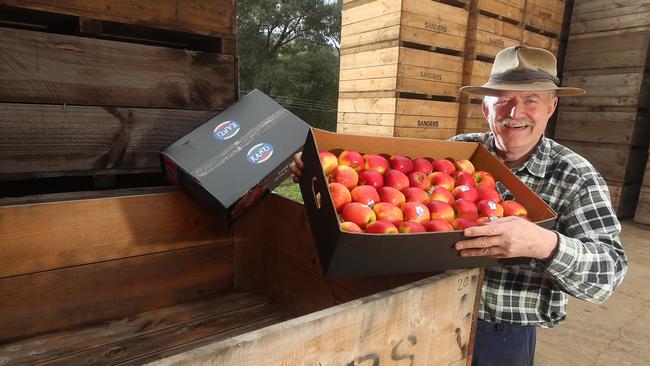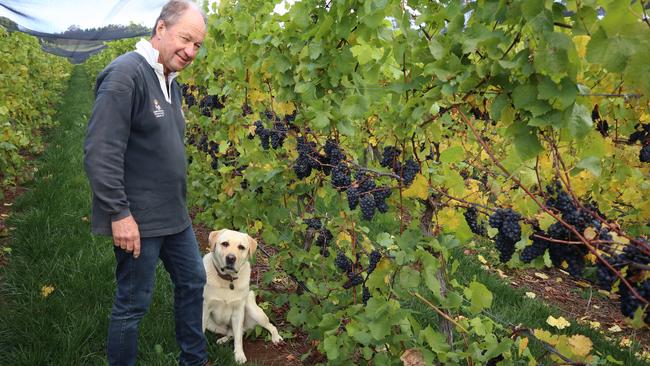On their radar: Growers finding new ways to farm to the climate
Farmers have changed the way they grow food for centuries. Winemaker Andrew Pirie and apple grower Kevin Sanders reveal their on-farm adjustments for a changing climate.
Farmers have changed the way they grow food for centuries, but more extreme events and a warmer climate has meant rapid transformations.
For Victorian grower Kevin Sanders, it meant creating a “modern orchard”, changing harvest for Gala apples from the final week of February to the first, and mitigating hail and sunburn.

Kevin Sanders’ father kept a daily dairy starting in 1958 to document flowering times for apples.
“For all the people who don’t believe in climate change, they better get on board,” he said.
Mr Sanders and his two brothers manage Sanders Apples at Three Bridges, with about 4000 trees a hectare, totalling between 120,000 and 140,000 trees. They needed to wholly net the farm to prevent more extreme hail and storm events.
“It’s becoming more and more common because you can’t sustain the losses if it’s not,” he said.
“In this area, we get more rain, but the events are heavier. The amount of times my shed has been flooded from rainfall … It’s quite extensive these days.”
For the market, he believed short-term rearrangement wouldn’t burden farmers, but there could be long-term troubles with pricing, food availability and accessing nutrition.
CSIRO agricultural climatologist Rebecca Darbyshire said climate was one of several risk factors farmers had to manage.
“Farmers are really good at working out what to do season to season. When they start seeing the shift into zones they haven’t seen before, it’s tricky,” she said.
She said changes could include sowing times, cultivation practices, irrigation efficiency, technological improvement and genetic adaptation.
“[With more heat events] workers shouldn’t be working at all in really high heat conditions, it burns fruit on the tree, it affects cattle productivity and milk. I’ve seen a lot of investment in protection in permanent cropping,” Dr Darbyshire said.
“Historically we can see Australia is doing well despite declining climate conditions. The issue is whether we will be able to continue doing that.”

In Tasmania, winemaker Andrew Pirie’s doctorate on climate studies prompted his vineyard, which showed to be suitable for cool-climate grapes in 1973, and he has continued to use climate data for predictions.
This year, he harvested sparkling fruit 10 days earlier, and noticed the first signs of early ripeness.
Dr Pirie said ways to mitigate included later-ripening varieties, including tempranillo from northern Spain, Merlot from Bordeaux, and Syrah from Rhone Valley.
“The nature of climate change is subtle … In 2023 we harvested pinot noir red grapes at 14 per cent alcohol – in my history in this region we’ve never done that before,” he said.
Dr Pirie said farm adaptation costs were higher than average in Tasmania with bigger trellis and more plants per hectare, with about $120,000 to change over, including irrigation.
He had a new vineyard site at an altitude of about 300m to stay at the cool end of the pinot noir range, to allow for a 30-40 year lifespan.
“[Change] is happening now slowly, but people are shooting from the hip instead of following the science,” he said.




